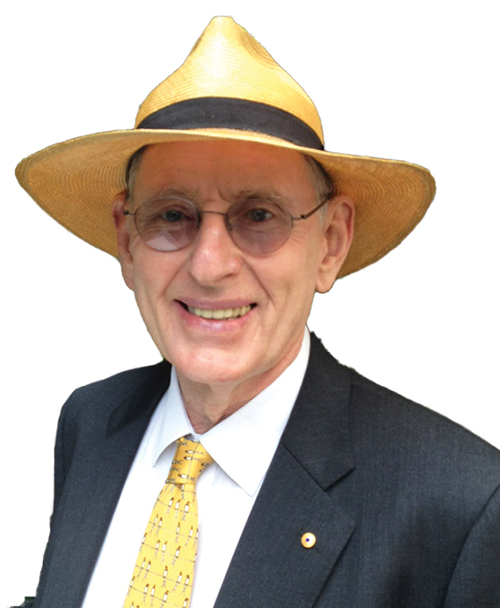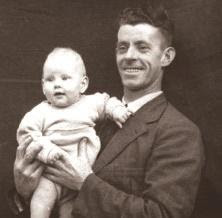
Until I started drinking alcoholically at the age of 14 , my teetotal, non-smoking, sportsman father Bill (“Long Tom”) Fitzgerald was my hero.

After playing cricket as a wicketkeeper for Collingwood and Aussie Rules football in the Victorian Football League – where he was the long-standing captain of the Collingwood reserves, dad became captain-coach of Sandringham in the Victorian Football Association.
He also was wicketkeeper for Sandringham’s first XI as well. Later on, at a lower level, he played cricket for Sandringham in the Victorian Junior Cricket Association (VJCA).
As a youngster, I followed my father’s cricketing example. While in fourth form at Melbourne Boys High School (where iconic ex-Australian captain Bill Woodfull was our principal), as a wicketkeeper I represented Victoria in the Australian Schoolboys championship.
It was while playing for Victorian schoolboys at the Adelaide Oval that I met Don Bradman, who struck me as extremely grumpy.
When I was still only 14, on one occasion dad and I put on a 50 partnership while playing for Sandringham in the VJCA.
As well as in 1957 coaching the Old Brighton Grammarians Football Club, in the Victorian Amateur Football Association (VAFA), my dad for many years had previously played a crucial role for the Brighton Cricket Club as a wicketkeeper/batsman for the club’s first XI.
As David King explains in his history of the Brighton Cricket Club, A Famous Old Club: A History of the Brighton Cricket Club ($85), my father was very tall for a keeper (6 feet 1 inch).

After having been a former Collingwood and Sandringham keeper, he “arrived at the Brighton Cricket Club in 1939–40”. During eight seasons (despite having wonky knees from playing football) he established himself “as one of the finest wicket keepers to have donned the gloves for the club”.
According to King, my father, who was captain of Brighton’s first XI in 1941–42 and 1942–43, was highly rated by his contemporaries.
Dad was especially noted for his propensity to stand up to the stumps to all types of bowling. As Brighton’s long-serving wicketkeeper he was, King writes, “safe and secure and had the agility and reflexes to effect stumpings off slow and medium-paced bowlers”.
This fine history of one of Melbourne’s most successful cricket clubs, which numbers among its alumni Test opening batsman Colin McDonald and bowler Shane Warne.
Fairytale emergence of spin bowler Jack Iverson
A highlight of this book is the fairytale emergence of Jack Iverson as a spin bowler of international class during the 1940s and early 1950s. Iverson was, my father often told me, the finest bowler to whom he ever kept.
Born in 1915, Iverson’s progression at the age of 31 from Brighton 3rd XI cricketer at the commencement of the 1946-47 season to the Test arena a mere four years later is arguably the greatest “rags-to-riches” story in the history of Australian cricket.
As King rightly points out, it is almost inconceivable that the modern game, with its professional pathways and academies, will ever see his like again.
Despite not having played any serious cricket since leaving school 15 years earlier, by the end of his debut season, Iverson was a force to be reckoned with. The next year (1947-48) he took Brighton to a premiership and his 79 wickets that summer in only 12 games remains a club record.
A successful Shield season for Victoria and an equally profitable tour with an Australian XI to NZ in 1949–50 propelled him into the Australian team for the home Ashes series of 1950-51.
Iverson led the Australian bowling averages with 21 wickets at 15.24 runs per wicket. Bamboozling the Poms, in one Test he got 6 for 27.
Although King doesn’t mention it, the 1950–51 Ashes series involved five Tests, each of six days with five hours play each day, and eight ball overs. Iverson’s highest score in all these Tests was 1 not out.
Iverson’s dramatic exit from top-level cricket
Jack Iverson’s disappearance from top-level cricket after 1951 was just as dramatic as his rise.
King puts it thus: “By the end of the following season Iverson left the Test arena and the first-class scene. This was partly due to pressure to devote more time to his father’s real estate business, but also to self-doubts and his belief that batsmen were now too familiar with his bag of tricks.”
After retiring from all forms of cricket in 1955–56, Iverson made a highly successful comeback to the game with Brighton in the early 1960s. In 1962-63 he won both the first and second XI sub-district bowling averages. The result was another Brighton first XI premiership in 1962-63.
As a spin bowler, Iverson was unique. Six feet three inches tall, he was quick through the air, bowled a flattish trajectory and landed the ball with unerring accuracy just short of a length.
As King explains: “Iverson gained considerable bounce and spun the ball sharply from the off. He delivered his stock off-spinner with a leg-break action but later developed a ball that turned slightly from the leg.
“Jack had huge hands and held the ball in a three-point grip between his first two fingers and thumb, spinning the ball with his middle finger.”
As a result, with the slightest change in his hand position, the ball could be made to turn from the leg instead of the off.
A complex character, according to King, “Iverson was shy and sometimes reluctant to mix socially, but at other times friendly and well-liked by those who knew him well.”
Unfortunately, during his last few years Iverson suffered from severe depression. As a result, he took his own life by gunshot in 1973.
Ross Fitzgerald AM is Emeritus Professor of History of Politics & History at Griffith University. This is an edited version of Prof Fitzgerald’s review published in The Sydney Institute of Books.
Who can be trusted?
In a world of spin and confusion, there’s never been a more important time to support independent journalism in Canberra.
If you trust our work online and want to enforce the power of independent voices, I invite you to make a small contribution.
Every dollar of support is invested back into our journalism to help keep citynews.com.au strong and free.
Thank you,
Ian Meikle, editor









Leave a Reply